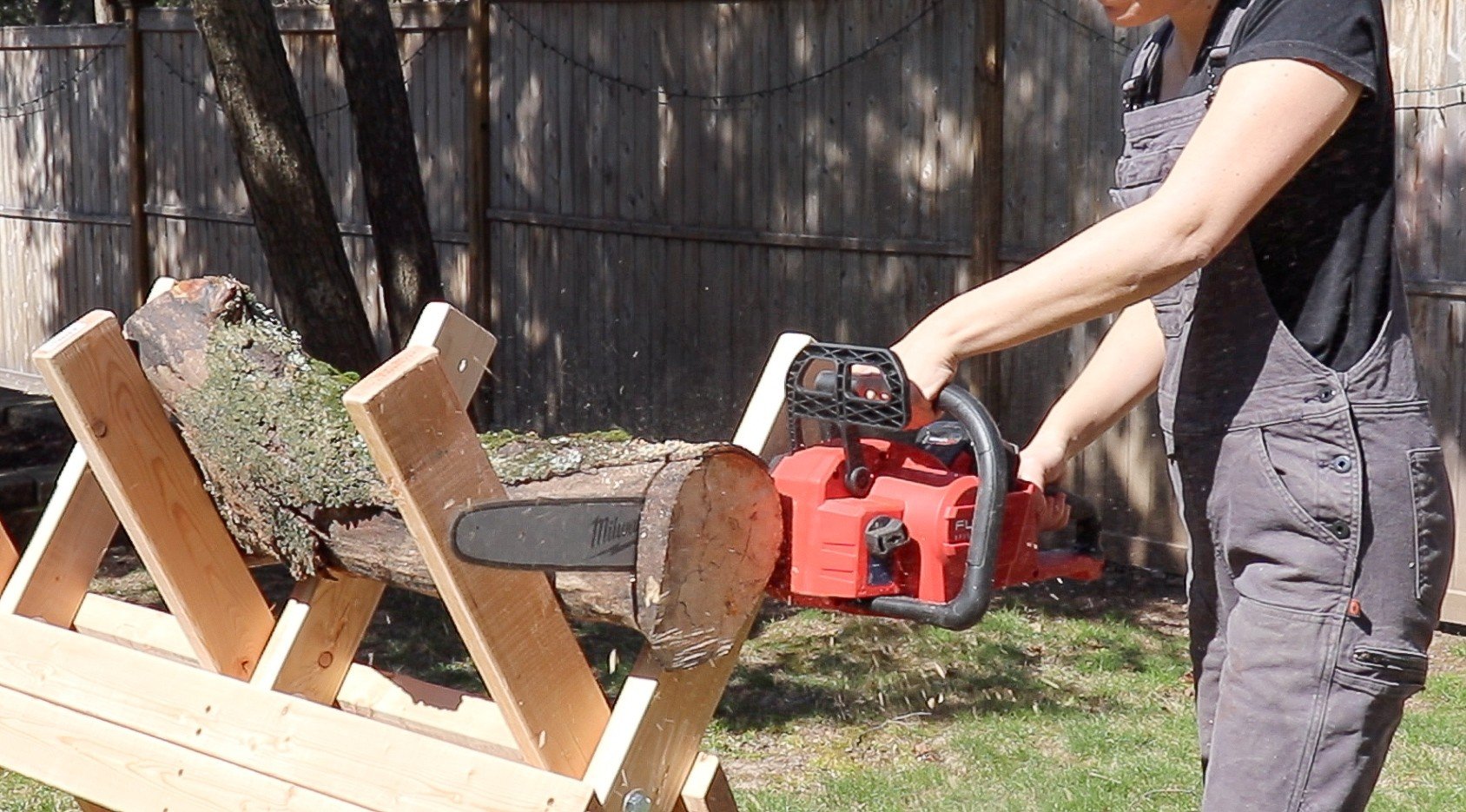Chainsaws come in various sizes and power options. For lighter tasks, such as pruning or cutting smaller logs, consider a battery-powered or electric chainsaw. These are easier to maneuver, quieter, and require less maintenance. However, if you’re tackling tougher jobs, like cutting larger trees, a gas-powered chainsaw will provide the extra power and endurance you need for those more demanding chainsaw for DIY projects.
Safety is another essential aspect to keep in mind as you choose your chainsaw. Look for features such as automatic chain brakes, low kickback chains, and comfortable grips. A well-designed chainsaw will not only enhance your efficiency but also ensure your safety as you work on your DIY endeavors. Always prioritize your well-being by wearing protective gear like gloves and goggles while operating your chainsaw.
Finally, consider the weight and balance of the chainsaw. A lightweight and well-balanced model is easier to handle, especially for extended use. Don’t hesitate to test several models in-store if possible. Picking the right chainsaw for DIY projects can make all the difference in your experience, making the job not only easier but also more enjoyable.
Essential Safety Gear for Chainsaw Use
Using a chainsaw for DIY projects can be incredibly rewarding, but safety should always come first. One of the most critical steps in ensuring your safety while operating a chainsaw is wearing the right gear. Proper safety equipment minimizes the risk of injury and allows you to focus on the task at hand. Here’s a rundown of essential safety gear to consider.
First and foremost, a sturdy pair of chainsaw-specific gloves is a must. These gloves are designed to provide excellent grip while protecting your hands from cuts and scrapes. Additionally, a good pair of safety glasses or goggles will shield your eyes from flying debris, ensuring clear visibility as you work. Don’t underestimate the importance of ear protection, too, as chainsaws can produce noise levels that can damage your hearing over time.
Another essential piece of gear is a hard hat, especially if you're working in an area where falling branches or objects can pose a danger. It’s also critical to wear chainsaw chaps or protective pants that are made from specialized materials to help stop the chain in case of contact with your legs. These safety features are crucial for anyone using a chainsaw for DIY projects and can be the difference between a minor incident and a severe injury.
Lastly, ensure that you have sturdy, slip-resistant footwear. Steel-toed boots offer excellent protection against accidental drops while providing the grip needed to maintain balance on uneven surfaces. When you gear up with the appropriate safety equipment, you empower yourself to take on any chainsaw project confidently, making the experience enjoyable and safe.
Basic Chainsaw Techniques for Beginners
When starting your journey with a chainsaw for DIY projects, it’s essential to familiarize yourself with basic techniques that ensure safety and efficiency. Whether you're cutting firewood, trimming trees, or crafting wooden structures, mastering these fundamentals will make your experience more enjoyable and productive.
First, always prioritize safety by wearing appropriate protective gear. This includes safety glasses, gloves, ear protection, and sturdy boots. Before you even turn on your chainsaw for DIY projects, take a few moments to inspect the tool. Check for any damages, ensure the chain is sharp, and confirm that the oil reservoir is filled. A well-maintained chainsaw is crucial for peak performance and safety.
Next, practice proper cutting techniques. Begin with the basics of making straight cuts. Hold the chainsaw firmly with both hands and maintain a stable stance. When making a cut, let the chainsaw do the work; apply gentle pressure without forcing it through the material. It’s also important to be aware of the kickback zone. Never cut with the tip of the chainsaw’s bar, as this can lead to unexpected rebound and potential injury.
Finally, familiarize yourself with different cutting positions and techniques for various tasks. For pruning branches, use the undercut technique to prevent the bark from tearing. For felling trees, learn how to make a notch cut and a back cut. Practicing these techniques will not only improve your skills but also boost your confidence in using a chainsaw for DIY projects. Remember, practice makes perfect, so take your time to learn and refine these techniques.
Maintaining Your Chainsaw for Longevity
To ensure your chainsaw remains a reliable tool for your DIY projects, regular maintenance is essential. A well-maintained chainsaw not only operates efficiently but also extends its lifespan significantly. Start by cleaning the chainsaw after each use. Remove any debris, sawdust, and sap that can accumulate and hinder its performance. Use a soft brush or a cloth to wipe down the exterior, and don't forget to clean the bar and chain, which are critical for smooth operation.
Next, regularly check the chain tension. A properly tensioned chain is crucial for safe and effective cutting. If the chain is too loose, it can slip off during use; if it's too tight, it can wear out quickly. Adjust the tension according to the manufacturer's guidelines to ensure optimal performance. Additionally, sharpening the chain is another vital part of chainsaw maintenance. A sharp chain cuts more efficiently and requires less effort. Invest in a quality sharpening tool and sharpen the chain regularly, especially if you are using your chainsaw for DIY projects frequently.
Don't forget the importance of oiling your chainsaw. Lubrication helps reduce friction and prevents the chain from overheating. Ensure you're using the right type of chain oil, as this can make a significant difference in how well your chainsaw functions. Check the oil level before each use and replenish as needed. Lastly, inspect your chainsaw periodically for any signs of wear or damage. Pay attention to the filters, spark plug, and air intake system. Taking timely action on these issues can save you from more significant problems down the line, ensuring your chainsaw for DIY projects remains in top shape.
